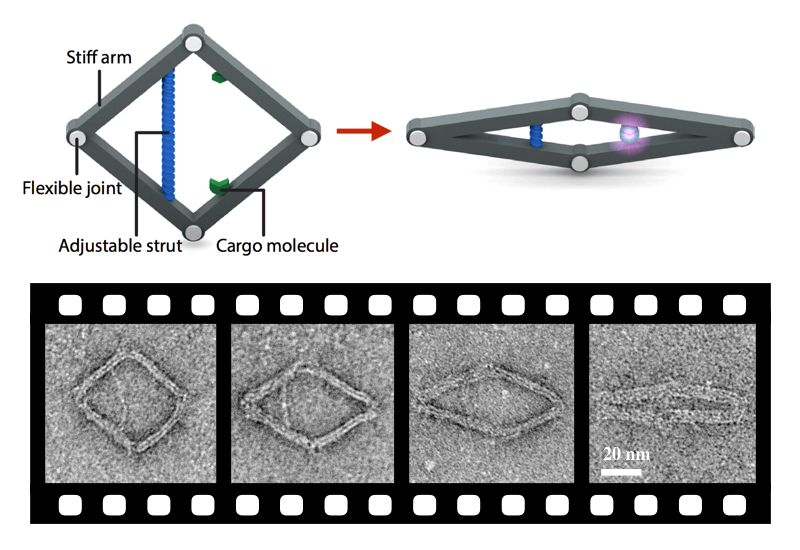
NANOMÉCANISME BIO-INSPIRÉ
Les biomolécules qui répondent aux stimuli chimiques et physiques en changeant de conformation sont essentielles aux fonctions cellulaires telles que la signalisation transmembranaire. Inspirés par de telles caractéristiques biomécaniques, Gaëtan BELLOT à l'IGF (Equipe Guillaume LEBON) travaille sur la conception de “nanomachines” à l’échelle du nanomètre qui présentent des mouvements et des fonctions contrôlables. Pour cela, nous utilisons une méthode appelée «ADN origami»; une nouvelle approche qui permet de construire des nanostructures à base d'ADN dans une forme 3D souhaitée. Jusqu’à présent ces nanostructures avaient une conformation statique. Récemment, nous avons construit un origami d'ADN dynamique avec des propriétés d'activation allostérique à longue distance, dans lequel la liaison d'une molécule effectrice contrôle sa forme globale. Ces nanodispositifs artificiels peuvent être utilisés comme bio-capteurs qui répondent à des stimuli spécifiques et peuvent également trouver des applications dans des domaines tels que la biophysique, l’administration contrôlée de médicaments et le stockage d’énergie.
Lien Publication
VIDEO BIO-INSPIRED NANOMECHANICS
BIO-INSPIRED NANOMECHANICS
Biomolecules that respond to chemical and physical stimuli and go through conformational changes are crucial in cellular functions, such as transmembrane signaling. Inspired by such biomechanical features Gaëtan BELLOT at IGF (Guillaume LEBON team) built nanometer-sized structures that exhibit controllable motions and functions, which is a critical step towards building nanomachines. We used a method called “DNA origami” : a programmable approach for building DNA nanostructures into a desired 3D shapes. In a recent study, we demonstrate the ability to control a dynamic DNA origami with long-range allosteric activation properties, wherein the binding of an effector molecule controls its global shape. This man-made nanodevices can be used as a sensor that responds to specific stimuli and may find applications in areas such as biosensing, biophysics, on-demand drug delivery, and energy harvesting.
Reference : Regulation at a distance of biomolecular interactions using a DNA origami nanoactuator.
Ke Y, Meyer T, Shih WM, Bellot G. Nature Communication. 2016, 187:10935.







